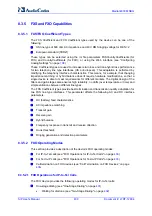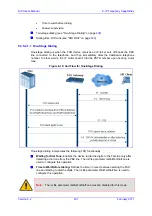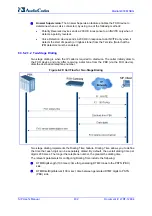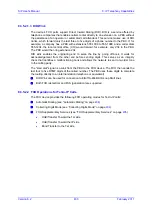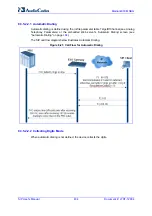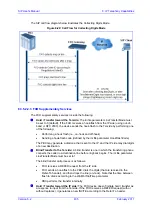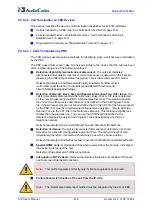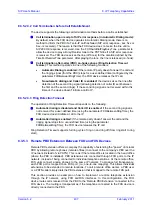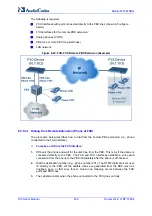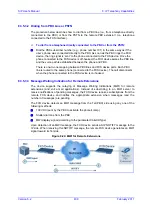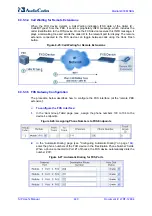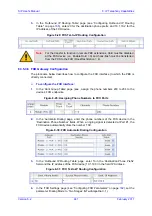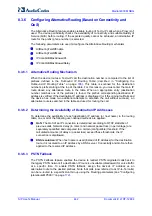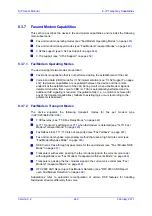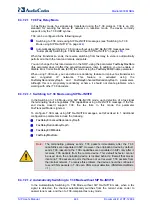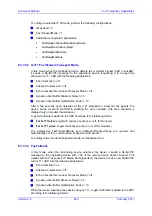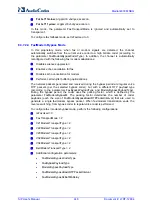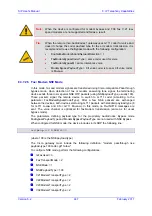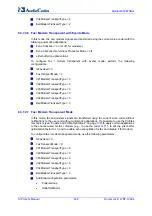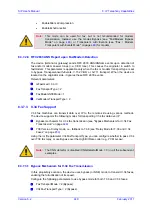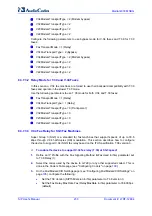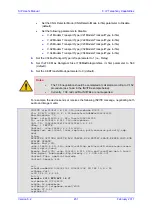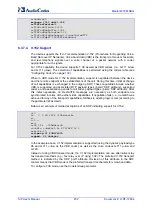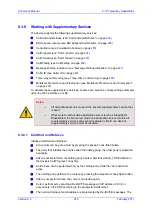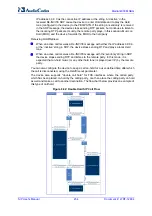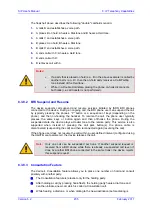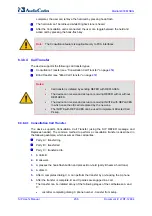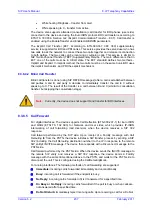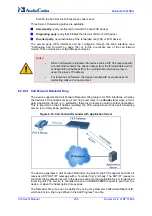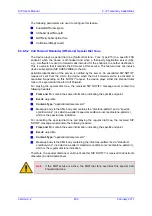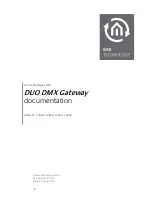
SIP User's Manual
444
Document #: LTRT-12804
Mediant 800 MSBG
8.3.7.2.1 T.38 Fax Relay Mode
In Fax Relay mode, fax signals are transferred using the T.38 protocol. T.38 is an ITU
standard for sending fax across IP networks in real-time mode. The device currently
supports only the T.38 UDP syntax.
T.38 can be configured in the following ways:
Switching to T.38 mode using SIP Re-INVITE messages (see ''Switching to T.38
Mode using SIP Re-INVITE'' on page
Automatically switching to T.38 mode without using SIP Re-INVITE messages (see
''Automatically Switching to T.38 Mode without SIP Re-INVITE'' on page
When fax transmission ends, the reverse switching from fax relay to voice is automatically
performed at both the local and remote endpoints.
You can change the fax rate declared in the SDP, using the parameter FaxRelayMaxRate
(this parameter doesn’t affect the actual transmission rate). In addition, you can enable or
disable Error Correction Mode (ECM) fax mode using the FaxRelayECMEnable parameter.
When using T.38 mode, you can define a redundancy feature to improve fax transmission
over congested IP networks. This feature is activated using the
FaxRelayRedundancyDepth and FaxRelayEnhancedRedundancyDepth parameters.
Although this is a proprietary redundancy scheme, it should not create problems when
working with other T.38 decoders.
8.3.7.2.1.1 Switching to T.38 Mode using SIP Re-INVITE
In the Switching to T.38 Mode using SIP Re-INVITE mode, upon detection of a fax signal
the terminating device negotiates T.38 capabilities using a Re-INVITE message. If the far-
end device doesn't support T.38, the fax fails. In this mode, the parameter
FaxTransportMode is ignored.
To configure T.38 mode using SIP Re-INVITE messages, set IsFaxUsed to 1. Additional
configuration parameters include the following:
FaxRelayEnhancedRedundancyDepth
FaxRelayRedundancyDepth
FaxRelayECMEnable
FaxRelayMaxRate
Note:
The terminating gateway sends T.38 packets immediately after the T.38
capabilities are negotiated in SIP. However, the originating device by default,
sends T.38 (assuming the T.38 capabilities are negotiated in SIP) only after it
receives T.38 packets from the remote device. This default behavior cannot
be used when the originating device is located behind a firewall that blocks
incoming T.38 packets on ports that have not yet received T.38 packets from
the internal network. To resolve this problem, the device should be configured
to send CNG packets in T.38 upon CNG signal detection (CNGDetectorMode
= 1).
8.3.7.2.1.2 Automatically Switching to T.38 Mode without SIP Re-INVITE
In the Automatically Switching to T.38 Mode without SIP Re-INVITE mode, when a fax
signal is detected, the channel automatically switches from the current voice coder to
answer tone mode, and then to T.38-compliant fax relay mode.
Summary of Contents for Mediant 800 MSBG
Page 2: ......
Page 366: ...SIP User s Manual 366 Document LTRT 12804 Mediant 800 MSBG Reader s Notes ...
Page 372: ...SIP User s Manual 372 Document LTRT 12804 Mediant 800 MSBG Reader s Notes ...
Page 390: ...SIP User s Manual 390 Document LTRT 12804 Mediant 800 MSBG Reader s Notes ...
Page 404: ...SIP User s Manual 404 Document LTRT 12804 Mediant 800 MSBG Reader s Notes ...
Page 616: ...SIP User s Manual 616 Document LTRT 12804 Mediant 800 MSBG Reader s Notes ...
Page 636: ...SIP User s Manual 636 Document LTRT 12804 Mediant 800 MSBG Reader s Notes ...
Page 652: ...SIP User s Manual 652 Document LTRT 12804 Mediant 800 MSBG Reader s Notes ...
Page 886: ...SIP User s Manual 886 Document LTRT 12804 Mediant 800 MSBG Reader s Notes ...

